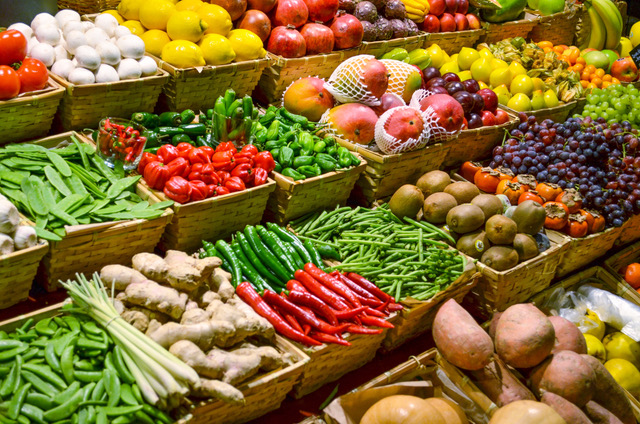A study in 2007 (Joy C. Rickman of the University of California, Davis) showed that loss of nutrients in fresh produce during storage was far higher than had previously been believed. The amount of time that passes when a vegetable is harvested and when it is purchased and served is the enemy of nutritional content—whether the crops are conventional or organic.
Levels of Vitamin C in refrigerated green peas fell by 50% during the first 48 hours after picking. After seven days, carrots lost 10% of their Vitamin C, spinach lost 75% and green beans lost 77%. In fact, seven days is less time than it takes a produce loaded semitruck to get across the country. But, what’s interesting is that freezing had a very different outcome—the vegetables lost only a small percentage of their Vitamin C after a year-long freeze.
Rickman also found that spinach left at room temperature for a week lost all of its Vitamin C. For food that needs to be kept cold, every hour at room temperature is equal to a day in the refrigerator. Breaks in the “cold chain,” or the temperature-controlled supply chain, occur when produce is allowed to get warm during the packing and transporting steps, can make the passage of time even more devastating to the nutrition of the fresh produce.
The nutritional values of fresh foods took a downward spiral when plant breeders began selecting varieties based on yield rather than nutrition. In 2009, Donald R. Davis published the results of a study that showed the correlation between rising yields of commercial produce varieties and the decline in the levels of nutrients, such as calcium, iron, Vitamin A, and the B vitamin thiamine. He called it “the dilution effect.” He found that since the 1940’s, minerals, vitamins, and protein had seen a median decline between 5% and 40%, especially in vegetables.
Since the 60’s, level of Vitamin C and thiamine in tomatoes alone have dropped by nearly 50%, according to the United States Department of Agriculture. The produce that our grandparents were eating was far more nutritious than what most of us are consuming today.
So, what is the answer? Luckily we have choices—you can fill your shopping basket with produce from local farmers who do not have to grow crops that can tolerate a week or more in a refrigerated transport truck, or you can always check out the freezer section in your local supermarket.
 Food
Food Farmers
Farmers Sustainable Living
Sustainable Living Living Planet
Living Planet News
News